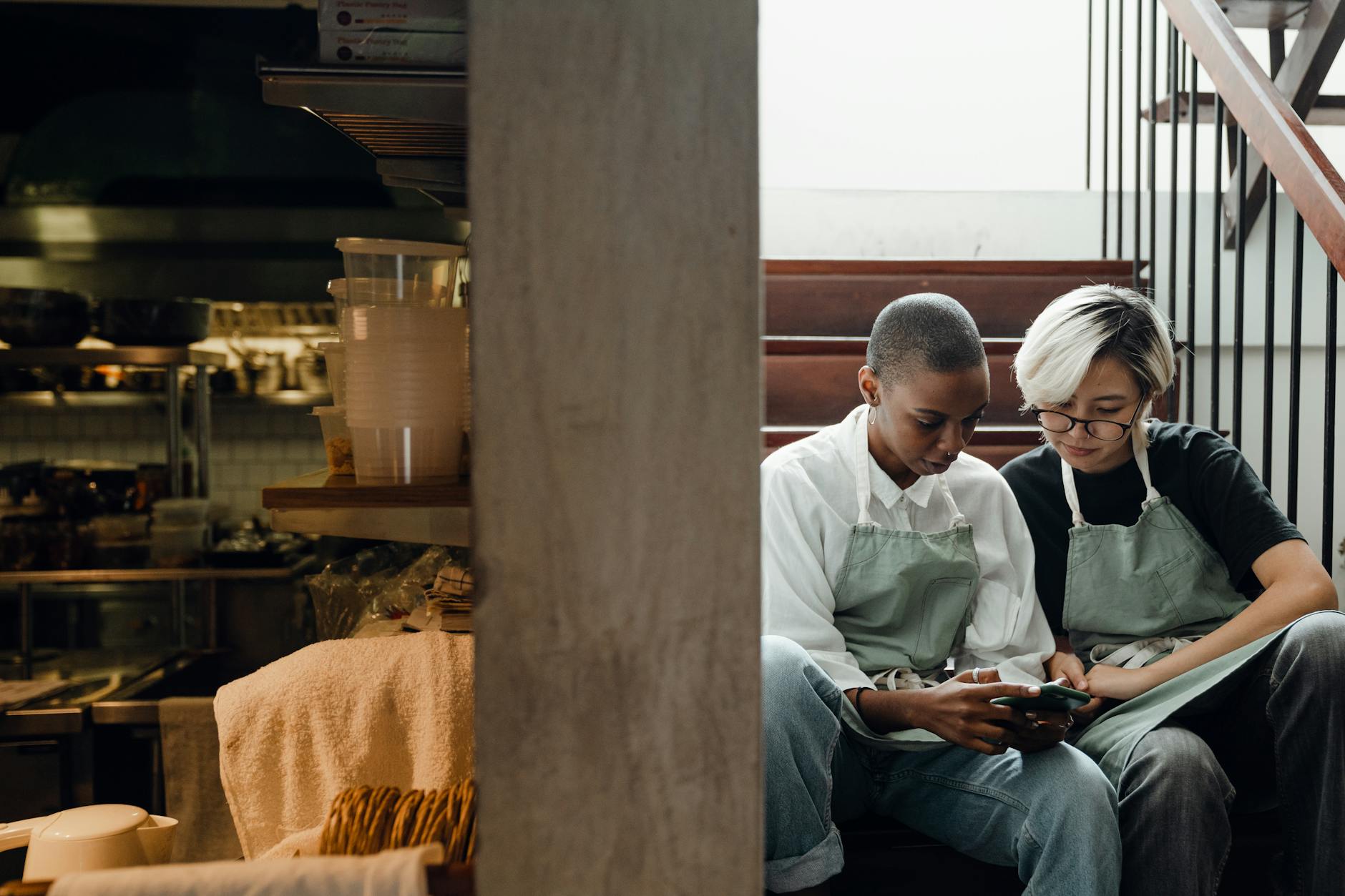How to Make Sustainable Fashion Choices for Kids in Australia

Understanding Sustainable Fashion
Sustainable fashion is an exciting realm that fuses creativity and environmental consciousness. It's a movement that emphasises eco-friendly materials and ethical production practices. Near the "Melbourne Museum's educational exhibits," I often find myself inspired by the innovations within the industry.
Key Concepts in Sustainability
In the fashion world, sustainability primarily revolves around reducing environmental impact, promoting ethical labour practices, and encouraging consumers to make informed decisions. Investing in quality pieces, such as durable womens jeans, can reduce waste and support the longevity of your wardrobe. Understanding these key concepts helps us take meaningful steps towards a greener future.
Impact of Fast Fashion
Fast fashion, characterised by low-cost, rapidly produced clothing, has extensive environmental and ethical repercussions. The global demand for quick production and turnover leads to excessive waste, unsafe working conditions, and overconsumption of resources. Opting for sustainably produced kids clothes can be a powerful statement against these harmful practices, setting an example for the next generation.
Benefits of Eco-Friendly Choices
Choosing eco-friendly fashion offers numerous benefits, from reducing carbon footprints to uplifting communities with ethical practices. Supporting brands that prioritise sustainable production means contributing to a healthier planet. For instance, selecting plus size lingerie from eco-conscious brands showcases a commitment to diversity and responsible consumerism. By making thoughtful choices, we empower ourselves and our communities to embrace a brighter and more sustainable future.
Selecting Sustainable Materials
Organic Fabric Options
Choosing the right pants for women or even track pants women often begins with understanding the fabric. Organic fabrics are an excellent option, whether you're shopping for adults or children's clothes. They are grown without harmful pesticides, making them better for the environment. Cotton and linen are popular choices, as they provide comfort and breathability. However, don't forget materials like organic bamboo, which offer a natural alternative to conventional fabrics. When you're next at Melbourne Museum's educational exhibits, you might notice displays on sustainable textiles that could further expand your knowledge on this front.
Recycled Materials Explained
Recycling plays a crucial role in sustainable fashion. Recycled polyester, for instance, is crafted from used plastic bottles. This innovative approach reduces waste and conserves vital resources. You'll often find recycled materials in fitness and casual wear. This is particularly important for items like gym wear and children’s outdoor clothing, where durability and flexibility are required. While browsing through eco-friendly markets at the Queen Victoria Market, keep an eye out for garments made from recycled materials.
Non-Toxic Dye Alternatives
Traditional dyes often contain harsh chemicals detrimental to the environment and potentially irritating to sensitive skin. Non-toxic dye alternatives offer a safer choice. Look for clothing items labeled as being dyed with plant-based or low-impact dyes, as these retain colour without adverse environmental impacts. Whether at art installations at Federation Square or strolling through local stores, this knowledge arms you with the insight to make more eco-conscious and skin-friendly purchases.
Finding Ethical Brands
Researching Brand Practices
As a community builder engaging in conversations about children's fashion, I've always been keen on exploring transparent practices that ethical brands embody. Understanding the behind-the-scenes of these companies helps us make informed purchasing decisions, fostering a more mindful consumer community. From eco-friendly markets in Queen Victoria Market, a common theme is transparency in sourcing, manufacturing, and labor practices. Personally, I prioritise brands that offer exhaustive reports or updates on their sustainable endeavours. These insights not only highlight their responsibility but also cultivate trust among customers.
Certifications to Look For
Knowing which certifications to search for is akin to having a compass in the ethical fashion terrain. Familiar labels like GOTS (Global Organic Textile Standard) and Fair Trade act as assurance marks. Such certifications signal sustainable production, fair wages, and safe working conditions, enhancing consumer confidence. In children's clothing, certifications confirm that items like baby shoes and skort are manufactured without harm to the environment or exploitation, ensuring our purchase supports ethical standards.
Community Support and Ethics
Uncovering brands known for community-centric projects can enhance our shopping ethics. I urge you to connect with groups focused on promoting ethical fashion within local spaces, like forums discussing art installations at Federation Square, where new ideas and sustainable initiatives in fashion are shared. Such interactions empower us, bridging connections with brands that uphold social responsibility and actively contribute to their communities. Through these partnerships, we contribute to a sustainable fashion movement.
Practical Shopping Tips
Assessing Quality and Durability
When shopping for kids' clothing, particularly around Melbourne, it's essential to assess both quality and durability to ensure a sustainable investment. High-quality materials not only last longer but also withstand wear and tear, which is perfect for energetic children. I often start by feeling the fabric; a good indicator is a soft yet sturdy touch. Look for strong seams, as they are less likely to fray or split after washing. For instance, when selecting womens shorts, the stitching should be tight and uniform, which indicates longevity.
Secondhand and Upcycled Options
Exploring secondhand stores and eco-friendly markets, like the ones at Queen Victoria Market, can be both sustainable and budget-friendly. These venues often have unique finds that add character to your child's wardrobe. Opting for upcycled clothing is another fabulous way to minimise waste, support ethical fashion, and engage in community building. Attending swap meets or donation events can also extend the lifecycle of clothing items, preventing them from ending up in landfills.
Online Resources for Kids’ Fashion
In our digital age, plenty of online resources can help simplify the search for eco-conscious clothing. Platforms dedicated to secondhand and vintage pieces provide myriad options. Many websites offer user reviews, enhancing the shopping experience by providing insights into product quality and customer satisfaction. Additionally, some platforms are dedicated to inclusivity, considering every body shape, as with innovative shapewear that ensures comfort and style for all. With these tools, we can easily make informed and sustainable choices in kids' fashion.
Common Mistakes in Sustainable Fashion
Navigating Label Claims
One common pitfall in children's sustainable fashion is misunderstanding label claims. In bustling Melbourne, where sustainability is as vibrant as the art installations at Federation Square, savvy shopping means reading beyond the buzzwords. When you encounter a children's vegemite toddler shirt or jumper tagged as "eco-friendly," take a moment to investigate. Dive into the brand's story or connect with a local community group to verify these claims. You could even initiate a fun family day at the Melbourne Museum's educational exhibits, where the kids can learn about sustainability while you explore the truth behind these fashion buzzwords.
Product Lifecycles Overlooked
Another frequent oversight is not considering the full lifecycle of a garment. Sustainable fashion is a journey, not a destination. Understanding the story from production to disposal ensures you're making a truly eco-conscious choice. Next time you're at the Queen Victoria Market, take the opportunity to discuss the complete lifecycle of your child’s favourite shirt with the market vendors. They often have insights into sustainable practices and can offer tips on extending the life of your little one's attire.
Conquering Impulse Buying
In Melbourne's vibrant fashion landscape, resisting the allure of impulse buying can be challenging. But when you're eyeing that adorable hamish childrens wear piece, pause. Instead of immediately purchasing, consider the item's purpose and longevity. Engage with other parents at community events or online forums to share experiences and recommendations about sustainable options. By building these connections, you not only enrich your knowledge but also empower your community to support each other on the sustainable fashion journey.


